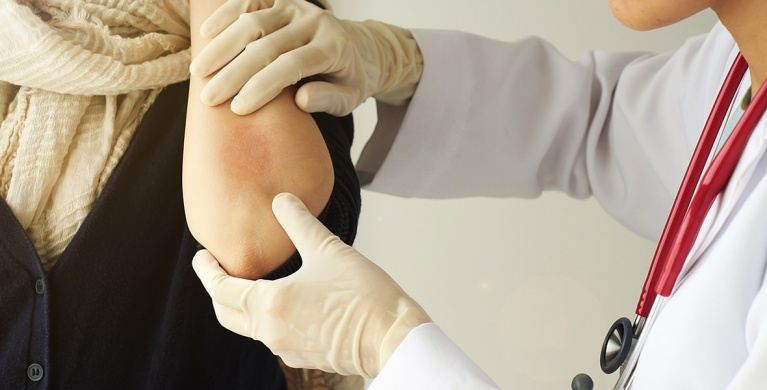

Eczema versus seborrheic dermatitis: how to tell the difference

You may have heard seborrheic dermatitis referred to as “cradle cap” in infants. Although it also presents as itchy patches, seborrheic dermatitis is different from eczema.
What is seborrheic dermatitis?
Commonly known as “cradle cap” in infants, seborrheic dermatitis affects adults as well.
Similarly to eczema, it is a form of inflammation but is linked to two combined factors.
A insérer en textes en 2 colonnes ci dessous :
First factor: sebum overproduction. That is why it affects mainly the scalp, which has a naturally high sebum production.
Second factor: a fungus, which leads to abnormal yeast (Malassezia) proliferation.
Une production de sébum trop importante. C'est pour cela qu'elle touche essentiellement le cuir chevelu, lieu d'une grande production naturelle de sébum.
Un champignon, qui entraîne une prolifération anormale de levures (malassezia).
How can you tell whether you have eczema or seborrheic dermatitis?
The following are the primary signs to help identify seborrheic dermatitis:
Visual:
- color of the patches: bright red covered in yellowish scales
- on the scalp: “dandruff” which is actually scales (dead skin) clustered into often itchy patches.
Affected areas of the body:
- In adults: appears mainly on the scalp, face, folds along the sides of the nose, and eyebrows, but sometimes also affecting the middle of the chest, between the breasts.
- In infants: symptoms begin on the scalp. Patches appear first around the fontanel before spreading, sometimes to the ears, eyebrows or even down to the diaper area and skin folds. This dual-localization (head and buttocks) is characteristic of this condition and a key differentiating factor from atopic eczema, which does not affect the buttocks.
Other difference:
- Eczema is always itchy, whereas seborrheic dermatitis isn’t necessarily (particularly in infants).
How to care for your skin
Eczema is caused either by an allergy or hypersensitive skin, and seborrheic dermatitis by a fungus. This means they require very different treatments.
Treatment for eczema
- Cortisone creams (topical corticosteroids): to soothe inflammation.
- Hydrating care: in the case of atopic eczema.
- Avoidance of the allergen (elimination): in the case of allergic eczema.
Treatment for seborrheic dermatitis
The doctor usually prescribes antifungal creams. Specific shampoos are often recommended as well.


